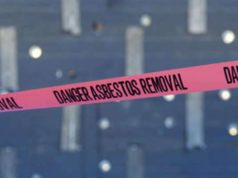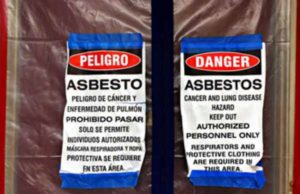
Evidence from scientific studies show that constant exposure to asbestos fibers can greatly increase the risk for certain types of cancer. Contact asbestos lawyers for legal advice and assistance.
When asbestos fibers are inhaled, they stick to mucus in the throat. These fibers eventually reach the ends of the small airways in the lungs or penetrate the outer linings of the trachea to irritate cells which eventually spark lung cancer or mesothelioma.
Mesothelioma Explained:
Mesothelioma is an aggressive form of asbestos cancer that develops in the mesothelial cells which are aligned with a number of organs and bodily cavities. Individuals who are in constant contact with asbestos fibers are at risk of contracting mesothelioma. Although the risks associated with mesothelioma are tied to asbestos contact, there is no true measurement in regards to the minimum amount of asbestos exposure that can lead to the disease.
Each year an estimated 3,000 new cases of malignant mesothelioma are diagnosed in the United States of America. The majority of these cases stem from constant exposure to asbestos through the individual’s workplace. As a result, occupational exposure to asbestos is the leading cause of asbestos cancer or asbestos-related diseases. The most common types of asbestos cancer are aligned with mesothelioma. However, asbestos fibers can precipitate other forms of cancer as well.
The following types of asbestos cancer are listed below:
Pleural Mesothelioma: The most common type of asbestos cancer. This form of malignant mesothelioma accounts for approximately 75 percent of all mesothelioma cases. Pleural Mesothelioma develops in the lining of the exposed individual’s lungs and spreads rapidly.
Peritoneal Mesothelioma: Develops in the peritoneum—a layer in the abdomen that covers the abdominal cavity and surrounds the abdominal organs.
Pericardial Mesothelioma: Develops in the pericardium—a membrane that surrounds the heart and offers protection to support the organ.
Testicular Mesothelioma: Considered the rarest form of Mesothelioma. Testicular Mesothelioma develops in the lining surrounding the testicle.
Although asbestos is a cause for such forms of cancer, symptoms of asbestos-based diseases do not appear for roughly 20 to 50 years after the initial exposure to the asbestos. Symptoms of asbestos cancer can range from subtle irritations to severe impediments. The following are common symptoms associated with each form of mesothelioma:
Pleural Symptoms: Patient will experience shortness of breath, a persistent cough, chest pains, fatigue, and lumps under the skin on the chest.
Peritoneal Symptoms: Patient will experience significant weight loss, abdominal pain, bowel obstruction, and nausea.
Pericardial Symptoms: Patient will experience heart palpitations, chest pains, difficulty breathing, night sweats, and an irregular heartbeat.
Testicular Symptoms: Patient will experience painful lumps on his testicles.
Other Forms of Cancer Associated with Asbestos
Inhalation of asbestos fibers has been scientifically linked to an increased risk of developing lung cancer. The majority of lung cancer cases associated with asbestos contact will not occur until at least 15 years following the initial exposure to asbestos. Asbestos lung cancer forms in the lining of the bronchi, which are the tubes where the trachea is divided.
The two most common types of asbestos lung cancer are small cell lung cancer (the cancerous cells are small and round) and non-small cell lung cancer. Non-small cell lung cancer accounts for approximately 80% of all asbestos lung cancers.
Symptoms Associated with Asbestos Lung Cancer
Patients in the early stages of asbestos-based lung cancer will not possess any tangible symptoms. The first symptoms that arise will typically entail a persistent cough, hoarseness, chest pain, weight loss, and rust-colored phlegm. If these symptoms are present, it is highly recommended that the individual seek medical attention. A full physical examination is warranted and a sample of the inflicted individual’s phlegm will be needed.
In addition to seeking medical aid, an individual can also file a lawsuit (if the mesothelioma or asbestos-based cancer was obtained through an employer’s negligence) to recoup the costs associated with medical treatments and the emotional strain that such a disease places on a family.
Filing a Lawsuit Associated with Mesothelioma or Asbestos-Based Cancers
Any individual who has been diagnosed with lung cancer or mesothelioma should speak to an asbestos attorney regarding their options for filing a lawsuit. Mesothelioma cases are straightforward considering asbestos exposure is the only thing that can cause the disease. In contrast, asbestos-based lung cancer presents several challenges.
The complexities associated with lung cancer-based lawsuits reside in the fact that lung cancer can be sparked by a number of causative agents. That being said, the basis for a lawsuit in any type of asbestos-related cancer must prove that the employer unjustly or negligently placed their employees at constant exposure to the harmful agents. In addition, a favorable settlement can be reached if the employer failed to provide the inflicted individual with proper safety equipment or protocol.
The laws associated with negligence and liability will vary from state to state. As a result of this variance, an asbestos attorney should be contacted in all cases of mesothelioma or other asbestos-related cancers.




























